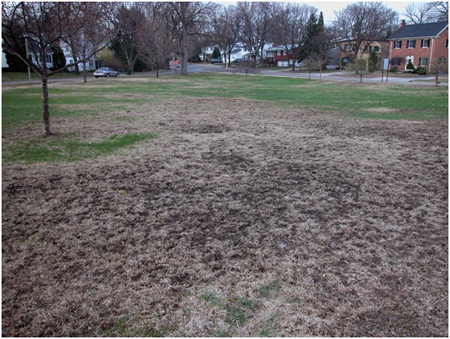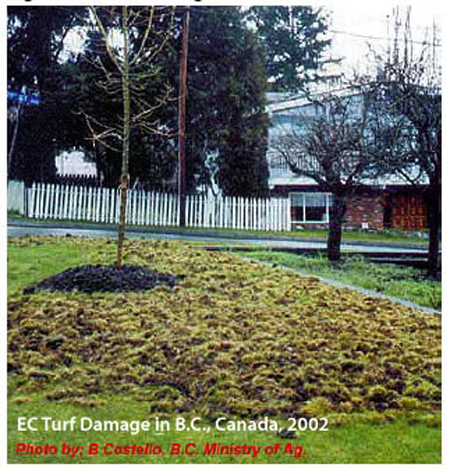European chafer grub damage to peak the next two weeks
Dig up the soil around the damaged area and look for C-shaped white grubs to confirm these are the culprit.
European chafer grubs have been eating turf roots since late March when the snow melted. The damage appears as patches of thin or dead turf, or even bare soil. The dead patches have been growing larger each week, and are expected to peak in size at the end of April. White grubs can be confirmed as the cause by digging-up the top 4 inches of soil around the edges of the damaged areas and looking for C-shaped white grubs. If grubs caused the damage, you won’t have any trouble finding them. If you are in northern Michigan, grub damage may continue into mid-May.

European chafer damage.

European chafer turf damage in B.C., Canada, 2002. Photo credit: B. Costello, B.C. Ministry of Ag
Spot-treating the infested areas with Sevin (carbaryl) or Dylox (trichlorfon) will stop the spring damage. Other turf insecticides will not work at this time for grubs. For more information on using insecticides to stop or prevent grub damage see the article by Terry Davis.
Preventing grub damage next year may be as easy as raising the mowing height on your lawn mower up to 3.5 inches, and watering during dry periods. This promotes a much larger root system under your turfgrass, making your lawn much more tolerant of feeding injury from hungry grubs.



 Print
Print Email
Email
